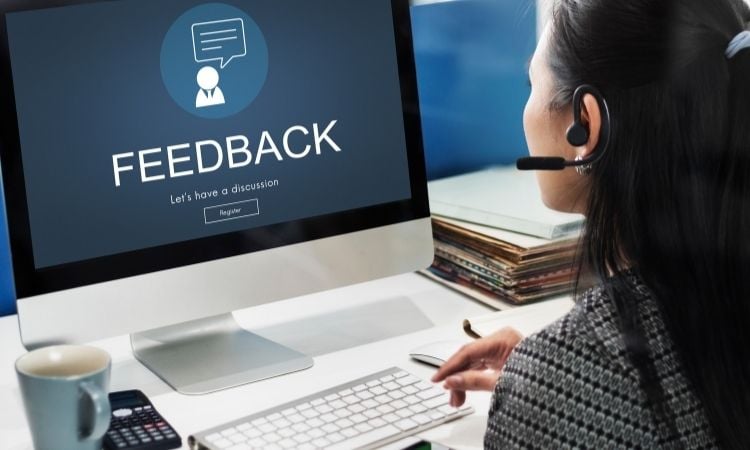Customer Effort Score (CES) is the industry-leading customer service metric that measures the levels of effort your customers have to put into a certain interaction with you to achieve their goals. CES is calculated by asking a simple question "To what extent do you agree with the following statement: The company made it easy for me to handle my issue?”
CES helps your business to deliver higher-quality interactions and drive customer satisfaction and loyalty. When you use CES to the fullest extent, it helps you to uncover the weak areas of your customer experience.
The way you analyze or act upon the CES data always provide you with insights based on which you can ease down the effort experience of your customers and improve fidelity towards the brand.
Measure & Improve Customer Effort👩💻
With CES Survey insights, design low-effort experiences for your customers and improve loyalty.

Why Customer Effort Score is important for your Business
According to the study by CEB, now Gartner, CES is "1.8x more predictive of customer loyalty than other customers experiences metrics." The study found that improving a customer’s CES score from 1 to 5 (on the 7 point scale) increased their loyalty by 22%. Further improving their CES score from 5 to 7 only increased loyalty by around 2%.
If you’ve started to measure the effort experience of your customers with the Customer Effort Score, then here are 5 major considerations to get started with the Customer Effort Score (CES) Survey:
1. Ask the Right Customer Effort Score Question
Customer Effort Score question has always been a concern for CES metric users. In the year 2010, CES question “How much effort did you personally have to put forth to handle your request?” was used to measure the customers’ efforts. But CEB, now Gartner, noted some flaws:
- Participants/Respondents didn’t always correctly interpret both the question and the answer.
- The word ‘effort’ does not translate well into other languages leading to confusion in some geo-locations.
Thus, the limitations in the CES original version have emphasized the significance of choosing the right choice of word in the question and led to the inception of CES 2.0. This CES 2.0 version was released in the year 2013 where you can surveying customers with the simple question To what extent do you agree with the following statement: The company made it easy for me to handle my issue. It has introduced the 7 level answer scale to make it easier to analyze the level of customers’ efforts.
Attributes of good Customer Effort Score question:
- First of all, while posing the CES question make sure that it should be unambiguous and ask only about the effort nothing else.
- Your CES question should be translatable for global comparability. Avoid using the word “effort”, whose meaning differs between languages.
- You can also represent your CES survey in the form of a Likert scale survey format in which customers can rate their effort experience on the scale of Agree/Disagree.
2. Choose the Right Scale
When it comes to measuring Customer Effort Score (CES), choosing the appropriate scale is very important to get positive results. CES metric offers an extensive range of scales that help you to collect data excitingly from your customers without boring them.
3 Major Types of Customer Effort Score Scales:
- The 1-5 Scale
- The Likert Scale
- The 1-7 Scale - CES 2.0
Note - Different types of CES surveys can change the way you calculate and score of surveys.
1. 5-Point Scale - Before 2013, 5-Point Scale was widely used to calculate the customer effort score. Here in this scale, respondents are provided with the 5 options:
1 = Very low effort
2 = Low effort
3 = Neutral
4 = High effort
5 = Very high effort
In this case, you will get a CES between 1 and 5, lower the score, better will be the results. This inverted scale of ranging the effort experience has caused some trouble. As people perceive high scores with a positive experience, so, some respondents intuitively clicked 5 and hurt the CES of the brand.
2. Likert Scale - Then we have another scale in the list that is the Likert Scale. In this scale, respondents are provided with the “Strongly Agree/Disagree”, “Neutral”, and “Agree/Disagree” scales to choose according to the level of effort they put in to get their queries resolved. It can also be represented with different color codes like red color represents strongly disagree and green color represents strongly agree. The most common issue noted with Likert scales is the Error of Central Tendency.
To solve all these common anomalies, CEB has incepted the 1-7 Scale, commonly known as CES 2.0 in the year 2013.
3. CES 2.0: 1-7 Scale - CES 2.0 introduced the 7 level answer scale to make it easier to analyze the level of customers’ efforts.
You can measure CES by surveying customers with the simple question “To what extent do you agree with the following statement: The company made it easy for me to handle my issue?” Customers usually answer on a standard scale ranges from 1– 7 scale whether they agree or disagree with the statement.
While using the Zonka Feedback Customer Effort Score Survey Software, you can use CES 2.0 to measure Customer Effort.
3. Choose the Appropriate Time
Timing plays a big in the success of your CES surveys. Choosing the right timing can drive maximum response to your CES survey. The best time to shoot CES questions or survey is immediately after customers concluded their experiences because at that moment the memory is fresh and the customer could able to provide unbiased feedback.
For example, if a person has booked an appointment, to ask about his ease of scheduling appointment with you will be right after he has successfully booked it. Similarly, after placing an order or getting a query resolved. Asking the Customer Effort Score question right after the customer's interaction is an ideal way to measure customer effort.
4. Choosing the Appropriate Benchmarking
Deciding a good Customer Effort Score (CES) is quite tricky. As there are no specific industry standards or benchmarks to compare the quality of the score. The quality of your CES score depends on the type of CES question you are posing and which CES scale you are using. Thus, CES metrics and questions are the two most important elements that determine the quality (Good or Bad) of your customer effort.
5. Choosing the Right Reporting & Analysis Module
There are various aspects of the CES data that provide you with in-depth insights that can help you to reduce the efforts of your customers and improve their experience. Always choose the right Customer Effort Score Survey Software that is incorporated with Feedback Reporting & Analysis module. This module provides an in-depth analysis report of all responses and helps you to swiftly resolve issues and improve customer experience.
%20Question.png)










